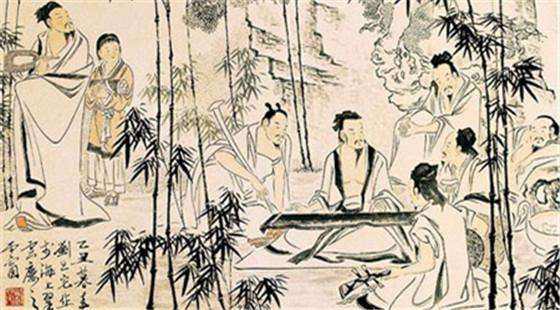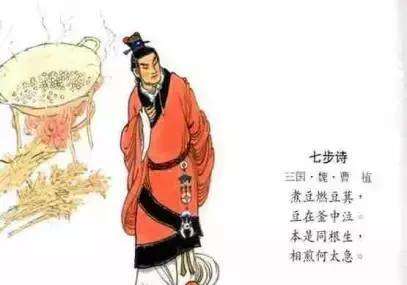The Jian’an Poetry and the Literature of Zhengshi
7 min readIn the late years of the Han dynasty,especially in the reign of Emperor Xian of Han,when the Yellow Turban Rebellion was crushed down,seperatist warlords,in order to expand their military strength,all gathered troops around themselves and set up separatist regimes by force of arms.The extended chaos caused by the prolonged warfare greatly damaged the normal social and economic life and brought grave disaster to people.Later,Cao Cao manipulated the emperor and commanded the regional warlords in the emperor’s name.
He adopted a series of effective reform measures,thanks to which the economy began to recover.Cao Cao strengthened his own power and unified the northern China.

In the 25th year of Jian’an period,Cao Pi dethroned the last Han emperor and established Kingdom of Wei.Shortly after,Sun Quan founded Kingdom of Wu in southeastern China and Liu Bei brought into being his Kingdom of Shu in southwestern China.Thus,started the famous Three Kingdoms period.However,in ideology,different schools of thoughts developed by certain degree in a relatively free and loose environment.Chinese poetry then entered an extremely important period known as the”Poetry of Jian’an”represented by Cao Cao and his sons and the Seven Masters of Jian’an.The their poems mostly convey a sad yet fresh,forceful and heroic attitude.
They inherited and passed on the realism in Yue Fu folksongs and gave a realistic portrait of the turbulent society of the time.The enterprising spirit of the poets which is embodied in the poems was later called”Jian’an style”.Thepoetry of Jian’an broke through the 4-character tradition of Yue Fu epics andshifted to the five-character lyrics.The Jian’an poetry not only laid a solid foundation for the development of traditional five-character poems but also pushed the five-character poems into a new development phase.

During the Zhengshi period of Wei,the political corruption and dark society scared the intellectuals out of any conflicts with the ruling class but into expressing their feelings in their writings.The promotion of Taoism fueled thethought of passive protests.The representatives were the”Seven Masters of the Bamboo Forest”.The literature of Taikang was more an example of separation between poetry and social life,with much attention not given to content but to skills,flowery diction,duality in rhymes and other expressions of formalism.
During the time of two Jin period,due to the prevalent metaphysics,there emerged a poetry genre known as the metaphysic poems characterized by emptiness and passiveness.The following century witnessed the dominance of such poems,which was only broken by Tao Yuanming of the Eastern Jin dynasty,a representative of eclogue who described the pastoral life in his simplistic,natural,fresh and appealing language.He advocated a life arena of no fame,no competition but a union of heavenand human being.His philosophy was influential and valued by many unrecognized and pessimistic scholars.
During the Southern and Northern dynasties,poetry developed from metaphysics t eclogues and became a part the pastime of aristocrats.Xie Linyun,in particular,created a large number of eclogues and laid a foundation for realism portrait of landscape in Chinese eclogues.Besides,the realism he inherited from Yue Fu of theHan dynasty also contributed greatly to the development of seven-character poems.
There was an obvious improvement in the rhythm,rhymes and forms of the poetry of the time,which were represented by Xie Tiao and Xie Linyun who were widely known as the”Senior Xie and Junior Xie”.The literature of the Northern Dynasty pursued to be practical, realistic and simplistic. The top achievement in this period was in folksongs which covered a wide range of subjects, such as the landscape of northern China, the nomad life of northern nationalities and their spirit of martial arts, wars and sufferings. The language in these folksongs is simple but forceful, bold, unstrained and powerful, and has far-reaching impact on the poetry of later generations.
The Jian’ an Poetry and the Literature of Zhengshi Jian’ an was the prime time for five-character poems in Chinese literary history.
Jian’ an poetry refers to the poems written at the end of Han danasty and the beginning of Kingdom of Wei. Then, gathered and called upon by Cao Cao and his sons, many scholars and literary men stayed in the capital of Wei to exchange ideas and learn from one another, which greatly promoted the development of literature and helped to form a literary world. All these people went through the chaos of the last years of the Han dynasty and the sufferings in the society and were all ambitious to rejuvenate the country. Thus, by inheriting the realism of Yue Fu and living in a relatively open-minded social environment, these people produced many works embodying the portrait of reality, the expression of ideals,a sad yet heroic style, and sharp individuality, the huge influences of Yue Fu poetry and unique characteristics of their own. This style was later called the “Jian’ an style”. The most representative poets of Jian’ an style are “Three Cao”,”Seven Masters”and Cai Cao Cao(155-220) was an outstanding militarist and politician. But he was also an established poet and the organizer and pioneer of Jian’ an poetry. As the top representative of Jian’ an poetry, Cao Cao blazed a trail with his poems and prose.
His active attitude in artistic writings served as an example and advocator for the writers of his time and later generations. With Cao Cao’s efforts, the poetry was transforming from the Yue Fu folksongs to the literary poems.
Cao Cao’s poems are all Yue Fu lyrics with the 4-character ones being the most outstanding and well-known. The 4-character poems are prevalent in Book of Odes, but after Yue Fu and The Nineteen Ancient Poems, few people were still creating the 4-character poems but the 5-character ones. Thus, Cao Cao is generally regarded as thelast 4-character poem writer. Cao Cao’s poems are simplistic in style and sorrowful in tones. Ao Taosun,a well-known poetry critics, once remarked that Cao Cao’s poems were magnificent in airs and rhymes. The best known works of Cao Cao include Hao Li Xing, Though the Tortoise Lives Long, Poem for Short Songs and Observing the Sea. Cao Cao made indelible contribution in the poetry history. His poems are closely related with social politics and are the descendant of Book of Odes. Furthermore, he set the example of new content in old forms, which gave Du Fu and Bai Juyi very good inspiration. And his poems to a certain extent also exerted influence on the popularity of eclogues as well as the interest and content of poetry Cao Pi(187-226) was the second son of Cao Cao. He took the upper hand in contending with his younger brother Cao Zhi for the status as Cao Cao’s heir and later was conferred crown prince. Following the demise of Cao Cao, he dethroned Emperor Xian of Han and proclaimed himself emperor of Wei. He did not achieve muchin politics but his talent in literature were relatively high. Among his surviving works, half of them are Yue Fu poems, which are narrow in content but variable informs. However, his biggest achievement is the five-character and seven-character poems. For example, the two Yan Ge Xing had rhymes in each line and the structure is very standardized. They are the most complete and mature existing seven-character poems, and serve as a reference for the development of this style.
Cao Zhi(192-232) was the younger brother of Cao Pi. As a versatile writer, he ranked top among his peers in poems, fu and prose. Zhong Rong listed Cao Zhi in his Poetry Comments as the most important poet and gave the highest comment ever. Poems by Cao Zhi influenced the later generations greatly. His adept use of figure ofspeech, the beauty and luxury in diction, the carefulness in duality, wording and tones, the use of level and oblique tones of regulated verses, his skills in toning and epigrams all display a sharp personal traits. Cao Zhi’s poems are the perfect combination of airs, styles and talents.
The other representative writers are the “Seven Masters”and Cai Yan. The Seven Masters refer to Kong Rong, Chen Lin, Wang Can, Xu Gan, Ruan Yu, Ying Chang and LiuZhen, among them the most prominent is Wang Can, whose Seven Sorrows is the mostwidely known. Liu Xie once ranked Wang Can the top of the Seven Masters for his excellence in poetry. Cai Yan (birthday unknown), courtesy name (zi) Wen Ji, was thedaughter of the famous Han scholar Cai Yong. She was very knowledgeable and highly skilled in music and rhythms. Her famous five-character poem Poem of Sorrow and Anger, which combines storytelling with expression of feelings, conveys a profound and forceful dignity, securing her status in the literary circles.

Jian’ an literature thrived at the beginning of the Three Kingdom period, andafter the reign of Emperor Wen and Emperor Ming it gradually developed into “Zhengshi Literature”. Due to political reasons, writers began to retreat from reality and the realistic portrait of social life was less and less to be found in their works. The realism in Jian’ an literature almost died out. When it comes toartistic form, the simplistic and forceful style of Jian’ an poetry was becoming obscure, and difficult. The original pure expression of sentiments was replaced by the descriptions of images. This period was called the period of Zhengzhi. The writers who achieved the most outstanding achievement were Ruan Ji and Ji Kang. Ruan Ji’s poems are delicate, accurate, lifelike, implied and sarcastic, which provided new techniques and experience for the development of five-character poems of later generations. However, Ji Kang was furious, unswerving, acid-tongued and free in lines, rendering high artistic value to his works.








